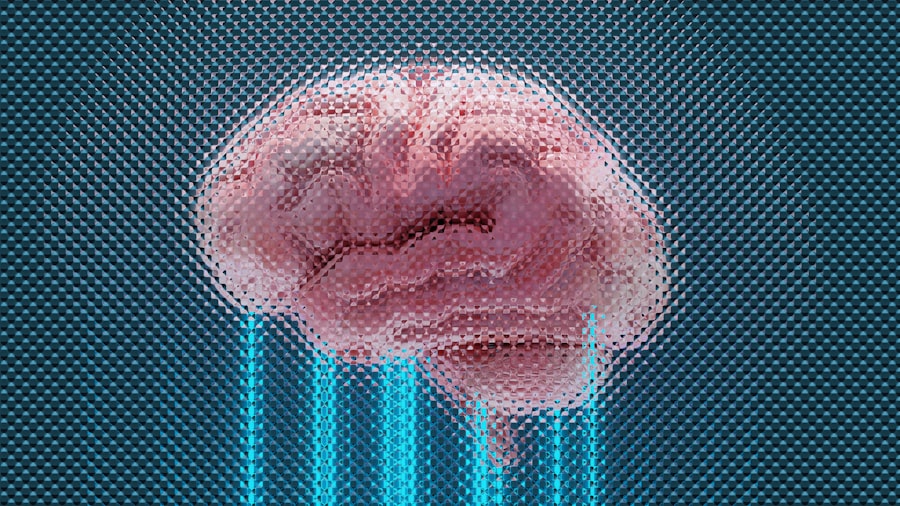The Bayesian Brain Hypothesis posits that the human brain operates fundamentally as a probabilistic inference machine. This perspective suggests that our cognitive processes are not merely reactive but are instead shaped by a continuous integration of prior knowledge and sensory information. You might find it fascinating to consider how this framework can explain various aspects of perception, decision-making, and learning.
By viewing the brain through the lens of Bayesian inference, you can appreciate the complexity of how we interpret the world around us, making predictions based on incomplete data and adjusting our beliefs as new information becomes available. At its core, the Bayesian Brain Hypothesis challenges traditional views of cognition that often emphasize deterministic processes. Instead, it embraces uncertainty and variability as inherent features of human thought.
This approach not only enriches our understanding of normal cognitive functioning but also provides insights into how we might better understand cognitive dysfunctions. As you delve deeper into this hypothesis, you will uncover its implications for various fields, including psychology, neuroscience, and artificial intelligence.
Key Takeaways
- The Bayesian Brain Hypothesis proposes that the brain is a probabilistic inference machine, constantly making predictions and updating beliefs based on incoming sensory information.
- The development of the Bayesian Brain Hypothesis can be traced back to the work of scientists and researchers in the fields of neuroscience, cognitive science, and artificial intelligence, with key contributions from Karl Friston, Rajesh Rao, and others.
- Key concepts of the Bayesian Brain Hypothesis include the idea of the brain as a predictive coding system, the use of Bayesian inference to update beliefs, and the role of precision-weighting in sensory processing.
- Probabilistic inference plays a central role in the Bayesian Brain Hypothesis, allowing the brain to make optimal decisions under uncertainty and to integrate prior knowledge with new sensory evidence.
- The Bayesian Brain Hypothesis has applications in cognitive science and neuroscience, offering insights into perception, learning, decision-making, and the neural basis of mental disorders.
Historical background and development of the Bayesian Brain Hypothesis
The roots of the Bayesian Brain Hypothesis can be traced back to the early 20th century when statisticians like Thomas Bayes began to formalize the concept of probability. However, it wasn’t until the late 20th century that cognitive scientists began to apply these statistical principles to understand brain function. You may find it intriguing that this shift was influenced by advancements in computational modeling and a growing recognition of the brain’s complexity.
Researchers started to explore how Bayesian principles could explain perceptual phenomena, leading to a paradigm shift in cognitive science. As you explore the historical development of this hypothesis, you’ll notice that it gained traction through interdisciplinary collaboration. Psychologists, neuroscientists, and computer scientists began to converge on the idea that the brain processes information in a manner akin to Bayesian inference.
This convergence was marked by significant studies demonstrating how humans make judgments under uncertainty, often aligning with Bayesian predictions. The evolution of this hypothesis reflects a broader trend in science toward integrating diverse methodologies and perspectives to tackle complex questions about human cognition.
Key concepts and principles of the Bayesian Brain Hypothesis

Central to the Bayesian Brain Hypothesis are several key concepts that shape its framework. One of these is the notion of prior beliefs, which refers to the knowledge or expectations you hold before encountering new information. These priors play a crucial role in how you interpret sensory data and make decisions.
For instance, if you have prior experience with a particular type of food, your expectations about its taste will influence your perception when you try it again. This interplay between prior beliefs and new evidence is fundamental to understanding how your brain processes information.
In your daily life, you constantly evaluate the likelihood of various outcomes based on the information available to you. The combination of prior beliefs and likelihood leads to posterior beliefs, which are your updated understandings after considering new evidence.
The role of probabilistic inference in the Bayesian Brain Hypothesis
| Study | Findings |
|---|---|
| Neural Correlates of Probabilistic Inference | Neurons in the brain exhibit activity consistent with probabilistic inference during decision-making tasks. |
| Behavioral Studies | Experimental evidence supports the idea that humans and animals use probabilistic inference in learning and decision-making processes. |
| Computational Models | Mathematical models based on probabilistic inference principles can accurately predict human behavior in various tasks. |
Probabilistic inference is at the heart of the Bayesian Brain Hypothesis, serving as the mechanism through which your brain integrates prior knowledge with incoming sensory information. This process allows you to navigate uncertainty effectively, making educated guesses about what you perceive and experience. For example, when you hear a sound in a crowded room, your brain uses probabilistic inference to determine its source based on contextual clues and past experiences.
This ability to infer meaning from ambiguous stimuli is a testament to your brain’s sophisticated processing capabilities. As you engage with this concept further, you’ll discover that probabilistic inference is not limited to perception alone; it extends to decision-making and learning as well. When faced with choices, your brain evaluates potential outcomes based on their probabilities, weighing risks and rewards before arriving at a conclusion.
This probabilistic approach enables you to adapt your behavior in response to changing circumstances, enhancing your ability to thrive in a complex environment.
Applications of the Bayesian Brain Hypothesis in cognitive science and neuroscience
The applications of the Bayesian Brain Hypothesis are vast and varied, influencing numerous domains within cognitive science and neuroscience. In perception research, for instance, scientists have employed Bayesian models to explain phenomena such as visual illusions and auditory processing. By framing these experiences through a Bayesian lens, researchers can better understand how your brain constructs reality from sensory input, often filling in gaps or resolving ambiguities based on prior knowledge.
In addition to perception, the Bayesian Brain Hypothesis has implications for understanding learning processes. You may find it interesting that educational strategies informed by this hypothesis emphasize the importance of building on prior knowledge to facilitate new learning experiences. By recognizing how your brain integrates past experiences with new information, educators can design curricula that align with these cognitive processes, ultimately enhancing learning outcomes.
Criticisms and controversies surrounding the Bayesian Brain Hypothesis

Despite its growing popularity, the Bayesian Brain Hypothesis has not been without its critics. Some researchers argue that while Bayesian models provide valuable insights into cognitive processes, they may oversimplify the complexities of human thought. You might encounter debates about whether all cognitive functions can be accurately described through probabilistic inference or if other mechanisms play equally significant roles.
This ongoing discourse highlights the need for continued exploration and refinement of theoretical frameworks in cognitive science. Another point of contention revolves around the empirical validation of Bayesian models. Critics often question whether there is sufficient experimental evidence to support the claim that human cognition operates primarily through Bayesian inference.
As you delve into this aspect, you’ll find that while many studies align with Bayesian predictions, others suggest alternative explanations for certain cognitive phenomena. This divergence underscores the importance of maintaining an open mind as you navigate the evolving landscape of cognitive research.
Experimental evidence supporting the Bayesian Brain Hypothesis
A growing body of experimental evidence supports the Bayesian Brain Hypothesis, providing insights into how your brain engages in probabilistic reasoning. One notable area of research involves visual perception studies that demonstrate how individuals use prior knowledge to interpret ambiguous stimuli. For example, experiments have shown that when presented with incomplete images or sounds, people often fill in gaps based on their expectations, aligning with Bayesian principles.
Additionally, studies examining decision-making processes have yielded compelling results that bolster the hypothesis. Researchers have found that individuals tend to make choices consistent with Bayesian predictions when faced with uncertainty. For instance, experiments involving gambling tasks reveal that participants weigh probabilities and outcomes in ways that reflect Bayesian reasoning.
These findings suggest that your brain’s decision-making mechanisms are deeply rooted in probabilistic inference, reinforcing the validity of the Bayesian Brain Hypothesis.
The relationship between the Bayesian Brain Hypothesis and artificial intelligence
The intersection between the Bayesian Brain Hypothesis and artificial intelligence (AI) is an exciting area of exploration that has garnered significant attention in recent years. As AI systems increasingly adopt probabilistic models for decision-making and learning, parallels can be drawn between these technologies and human cognition. You may find it intriguing that many AI algorithms are inspired by Bayesian principles, utilizing prior knowledge and likelihood assessments to improve their performance over time.
This relationship not only enhances our understanding of AI but also provides insights into human cognition itself. By studying how AI systems implement Bayesian reasoning, researchers can gain valuable perspectives on cognitive processes and vice versa. As AI continues to evolve, you might consider how these developments could inform our understanding of intelligence—both artificial and human—leading to advancements in fields ranging from robotics to healthcare.
The potential impact of the Bayesian Brain Hypothesis on understanding mental disorders
The implications of the Bayesian Brain Hypothesis extend beyond cognitive functioning; they also hold promise for understanding mental disorders. Many psychological conditions involve disruptions in perception, decision-making, or learning processes—areas where probabilistic inference plays a crucial role. By applying a Bayesian framework to these disorders, researchers can explore how altered beliefs or expectations contribute to symptoms.
For instance, conditions such as anxiety or depression may involve maladaptive priors that skew perception or decision-making processes. Understanding these dynamics through a Bayesian lens could lead to more effective therapeutic interventions tailored to address specific cognitive distortions. As you consider this potential impact, it’s clear that integrating insights from the Bayesian Brain Hypothesis into clinical practice could revolutionize approaches to mental health treatment.
Future directions and research opportunities in the Bayesian Brain Hypothesis
As you look ahead at future directions for research on the Bayesian Brain Hypothesis, several exciting opportunities emerge. One area ripe for exploration involves refining computational models that better capture the nuances of human cognition. By developing more sophisticated algorithms that account for individual differences in prior beliefs and decision-making strategies, researchers can enhance our understanding of cognitive variability.
Additionally, interdisciplinary collaboration will be crucial in advancing this field. By bringing together experts from neuroscience, psychology, computer science, and philosophy, you can foster innovative approaches that bridge gaps between theoretical frameworks and empirical findings. This collaborative spirit will be essential for addressing complex questions about cognition and its underlying mechanisms.
Conclusion and implications of the Bayesian Brain Hypothesis for the field of neuroscience
In conclusion, the Bayesian Brain Hypothesis offers a compelling framework for understanding human cognition through probabilistic inference. By recognizing how your brain integrates prior knowledge with sensory information, you gain valuable insights into perception, decision-making, and learning processes. While criticisms exist regarding its applicability across all cognitive functions, ongoing research continues to provide empirical support for this hypothesis.
The implications extend beyond theoretical discussions; they hold promise for practical applications in education, mental health treatment, and artificial intelligence development. As you engage with this evolving field, consider how embracing uncertainty and variability can enrich our understanding of both human cognition and artificial systems alike. The journey into the intricacies of the Bayesian Brain Hypothesis is just beginning—an exciting frontier awaits those willing to explore its depths further.
The Bayesian brain hypothesis suggests that the brain operates as a probabilistic inference machine, constantly updating its beliefs about the world based on incoming sensory information. This concept is pivotal in understanding cognitive processes and has been explored in various psychological and neuroscientific studies. For those interested in delving deeper into this topic, an insightful article can be found on Unplugged Psych. It discusses the implications of the Bayesian brain hypothesis in modern psychology and neuroscience. You can read more about it by visiting Unplugged Psych.
WATCH THIS! The Shocking Truth About Perception Loops
FAQs
What is the Bayesian brain hypothesis?
The Bayesian brain hypothesis is a theory that suggests the brain operates as a Bayesian inference machine, using probabilistic reasoning to make sense of the world and make decisions.
How does the Bayesian brain hypothesis work?
According to the Bayesian brain hypothesis, the brain combines prior knowledge with new sensory information to update its beliefs and make decisions based on the most likely outcome.
What is Bayesian inference?
Bayesian inference is a method of statistical inference in which Bayes’ theorem is used to update the probability for a hypothesis as more evidence or information becomes available.
What are the implications of the Bayesian brain hypothesis?
The Bayesian brain hypothesis has implications for understanding perception, decision-making, learning, and cognition. It suggests that the brain’s processing is inherently probabilistic and adaptive.
How is the Bayesian brain hypothesis supported by evidence?
Evidence for the Bayesian brain hypothesis comes from studies in neuroscience, psychology, and artificial intelligence, which have shown that the brain’s processing is consistent with Bayesian principles.
What are some criticisms of the Bayesian brain hypothesis?
Critics of the Bayesian brain hypothesis argue that it may oversimplify the complexity of the brain’s functioning and that it may not fully account for the role of heuristics and biases in decision-making.




